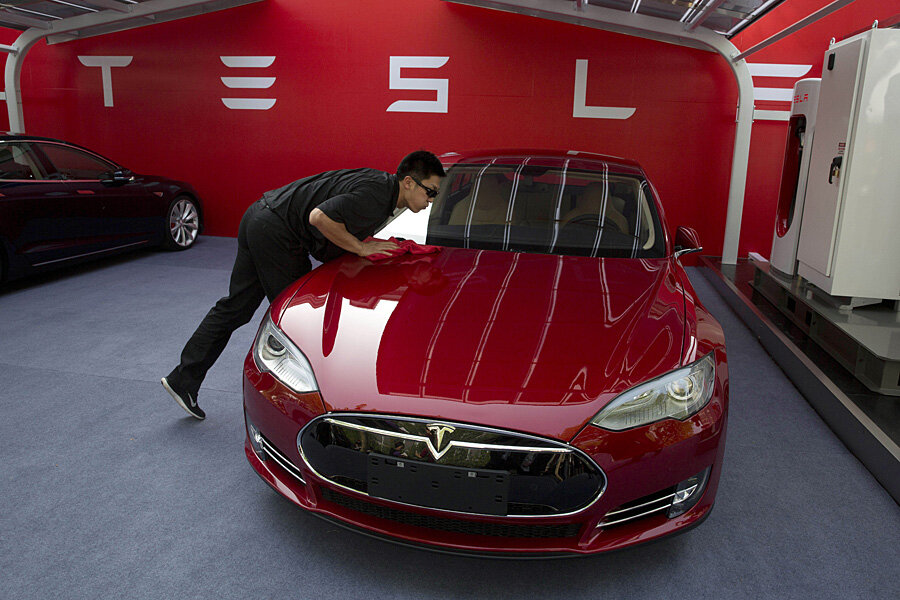Tesla Motors partners with Panasonic to build its Gigafactory. But where?
Loading...
Tesla Motors has partnered up with Panasonic Corporation to build Tesla’s Gigafactory, the automaker announced Thursday.
Tesla Motors and Panasonic signed an agreement to work together on building Tesla’s Gigafactory, which would be the world’s largest lithium-ion battery manufacturer when completed. The Gigafactory would also add about 6,500 jobs by 2020.
Tesla will be in charge of the land, building, and utilities, the automaker says in a press release. Panasonic will manufacture and supply cylindrical lithium-ion cells and invest in the associated equipment, machinery, and other manufacturing tools based on their mutual approval. Tesla will also continue to purchase the Osaka, Japan-based company's battery cells.
Tesla hopes to start construction this year and start making lithium-ion cells in 2017, Japanese news outlet Nikkei reports. However, the location of the battery factory hasn’t been determined yet. Several US states have been courting Tesla for the Gigafactory, including California, Nevada, Arizona, New Mexico, and Texas.
Wherever the factory is built, it will likely provide an economic boost in that state, especially given the Great Recession's strong effect on the West and Southwest. One possible contender is Stockton, Calif., the Los Angeles Times reports. Stockton, which has dealt with high unemployment and a high rate of home foreclosures, could be an ideal location since it is located near Tesla's existing facilities and has affordable housing for its workers. But other states with fewer taxes and lower labor costs may be more ideal than California.
Tesla did not specify how much Panasonic would invest in the project, although Tesla has said the Gigafactory would cost as much as $5 billion to build. Nikkei reports that Panasonic is expected to initially invest 20 billion to 30 billion yen, or $194 to $291 million in Tesla Motors and invest the full $5 billion, but it did not specify the source of the information.
The Panasonic partnership is one of a few expansive moves Tesla has made in recent weeks. Earlier this month, chief executive Elon Musk confirmed the automaker's next model, the Model 3. Priced at $35,000, the Model 3 is Tesla’s cheapest electric car and the company's first attempt to cater to a wider range of customers, but its price tag is still high for many Americans.
That said, Mr. Musk wants electric cars more widely available. In June, Tesla opened up all of its patents to other automakers in an effort to advance electric vehicle technology. The move has potential to make Tesla’s technology the industry standard, but there has to be more interest from automakers and consumers.
Tesla will report its second quarter earnings report later on Thursday. Afterwards, Tesla executives have scheduled a conference call with Wall Street analysts, in which details about the Gigafactory’s location may be discussed, according to the Reno Gazette-Journal.






